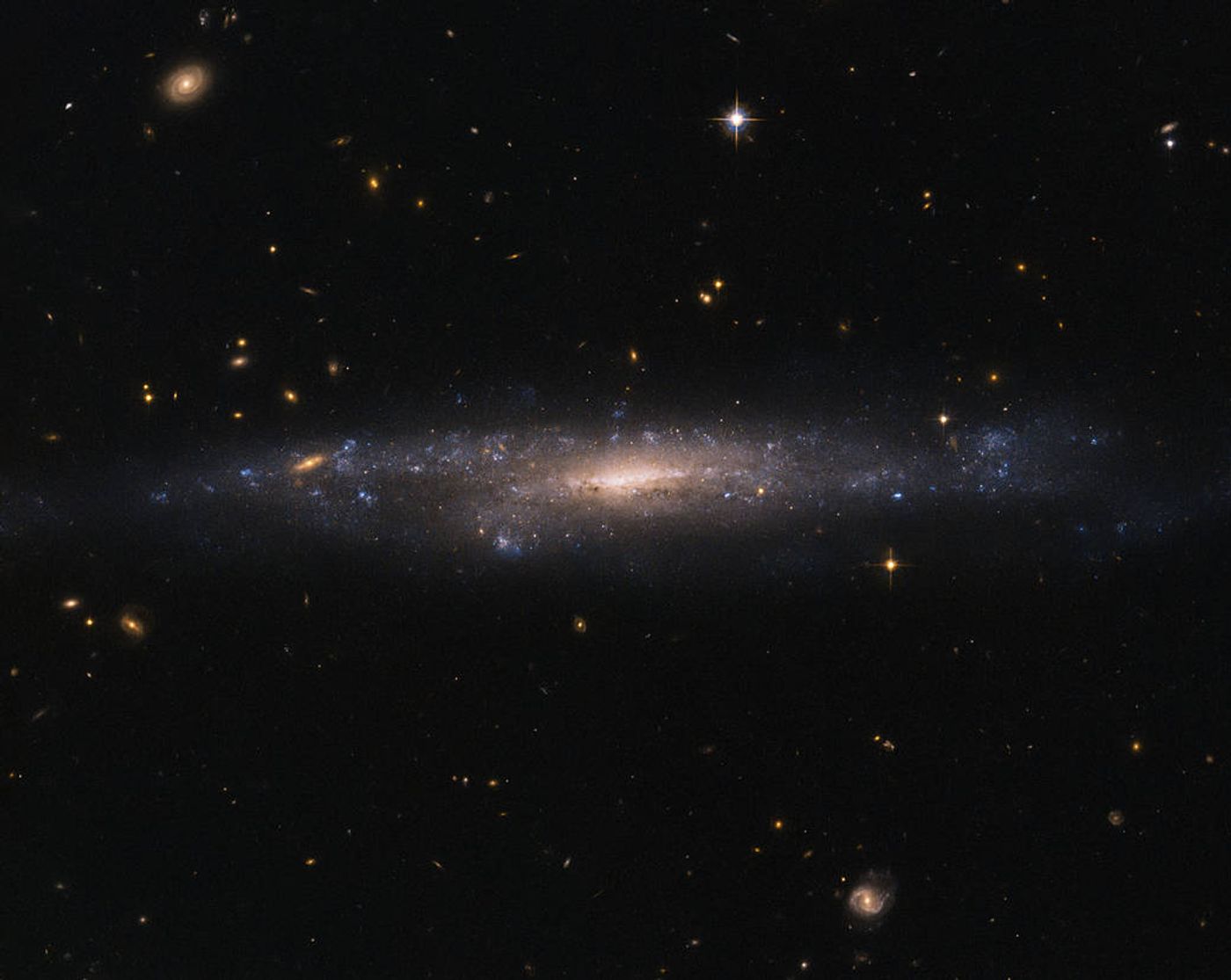Hubble Image Shows Low Surface Brightness Galaxy in Vivid Detail
A lot of mystery surrounds the existence of something known as a low surface brightness (LSB) galaxy. These are essentially galaxies that have very little star mass to them, and instead are mostly hydrogen gas.
As a result of their lack of stars, they are much dimmer than the traditional galaxy that we typically observe, which makes them more difficult to spot and even harder to understand.

Hubble Space Telescope, on the other hand, has no problem finding these interesting phenomena because the telescope resides in space, above our atmosphere, where the atmosphere can’t hinder its view of other systems in the universe.
What we see here in this photograph is a representation of an LSB galaxy known as UGC 477 taken in a photograph by the Hubble Space Telescope. It is found in the constellation of Pisces over 110 light years away from our planet.
NASA explains in a statement that the idea of low surface brightness galaxies first emerged in 1976 by astronomer Mike Disney, but it wasn’t until 1986 that we actually recorded proof of them existing.
There are a lot of theories as to why they exist, but there isn’t a whole lot of understanding behind why they’re so different from other galaxies.
Some astronomers theorize that the reason they lack as many stars as other galaxies is because they’re floating around in areas of the universe where there isn’t a whole lot of matter for them to collide with and start reactions with, and as a result, they’re still very much virgin galaxies.
The lack of activity is precisely what is believed to hinder star formation in these galaxies. Stars form under intense situations that simply don’t have the potential to occur in these types of galaxies.
Nevertheless, NASA does see one thing of value in these LSB galaxies: dark matter. The space administration says there’s a lot of it in these kinds of galaxies and provides a lot of possible observation opportunities.
UGC 477 isn’t the only LSB galaxy out there, and it won’t be the last one we discover. With the James Webb Space Telescope preparing for assembly and launch within just a few more years, we may get even more distant views of our universe in no time at all.
Source: NASA








